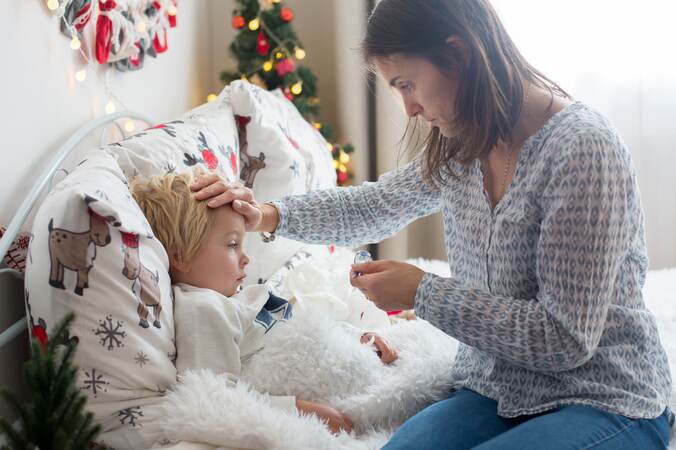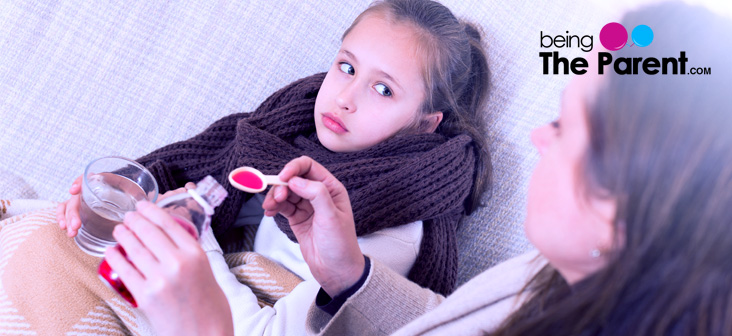
Toddlers are a handful – you need to watch them like a hawk, because you never know what they might get up to. But they are fun to have around – their innocence and constant craving to learn is a joy. They look like little angels when they’re sleeping, and yet they can turn into completely unfamiliar little beings when they fall sick. many parents confuse when it comes to how to care for a feverish toddler.
We’ve all been through this. Your usually happy and healthy child comes back from her playgroup all cranky and dull. You touch her forehead and find that she is running a fever, that means her temperature is 37.4°C (99.4°F) or higher. This is par for the course – fever is just the body’s defence against infection from bacteria or a virus. The higher temperature kills the germs, and in most cases the fever goes away in 2-3 days. But those few days can be taxing – caring for a feverish toddler is not easy.
How should you care for your child when she has fever?
Fevers cause discomfort, weakness and can dehydrate the body. A healthy toddler will just fight the infection, and be back on her feet in 3-4 days. Unless you notice other symptoms like a rash or severe sore throat, you can easily treat your child at home.
Most fevers go away once the child gets some rest. The body’s immunity may be low due to exhaustion, and a low fever may creep up. Let her sleep and rest, and she will feel better after the nap. If she still seems uncomfortable, then you can start treating the fever with medicines.
Always keep fever medication (ibuprofen) handy at home or when you are traveling. Do ask your doctor for the recommended dosage as well as frequency – it usually varies according to the age and weight of the child. The medicine won’t fight the infection, but it can help her feel better and more restful.
While the medicines take their course, and the little body recovers its strength, here’s what you can do to make your little one comfortable and safe.

- Make her rest in comfortable surroundings – her room should not be too cold or too hot.
- Make her wear loose comfortable clothing.
- Cover her with a sheet or a light blanket.
- Cool her off from time-to-time with a lukewarm sponge bath.
- Give her lots of fluids, so she doesn’t get dehydrated.
The medicine brings down the temperature, and adequate rest helps the body recover faster.
What not to do?
- Do not give your child aspirin. Combination cold and flu remedies are also to be avoided for young children.
- Use only lukewarm water to bathe your child. Using icy cold water or rubbing your child’s skin with alcohol may actually drive the fever up.
- Do not bundle her up in warm clothes or thick blankets, even if she is shivering.
- Check her temperature if your child has very low energy levels. Do not obsess over it or disturb her sleep to take the temperature.
Chances are, that rest and sleep is all your child needs to fight the fever. Give her that, and she will be back on her feet soon.
When should you call the doctor?
Usually, you don’t need to take your sick child to the doctor at the first sign of fever. However, persistent or high fever may be an indication of something serious, and must be checked by a doctor. You should see your paediatrician if your toddler’s fever:
- Touches 104°F or goes beyond
- Lasts for over 72 hours
- Is accompanied by other symptoms like a stiff neck, extremely sore throat, ear pain, rash, or a severe headache
- Results in a seizure
- Makes her cry continuously
- Makes her very sick, upset, or unresponsive
If your child has any of these symptoms, then do not delay consulting a doctor.
Fevers are a part and parcel of growing up. Make sure your toddler is comfortable, hydrated and resting. And she should be back to her normal, chirpy and active self in no time at all!
